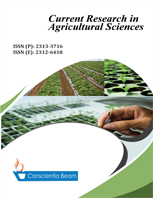Germination Effects of Purposive Bruchid Screening of African Ebony (Dalbergia Melanoxylon) Seeds in the Arid and Semi-Arid Region of South Eastern Kenya
DOI:
https://doi.org/10.18488/journal.68/2015.2.2/68.2.60.66Abstract
The African ebony (Dalbergia melanoxylon) is a tree that is crucial in making of high value wooden traditional artifacts, however its slow growth in the arid and semi-arid lands (ASALs), poor germination and low seedling growth rate, seed pest predation coupled with overharvesting pause a great threat for the future availability of the species. Unscreened natural methods of seed germination might not sustainably solve the problem of low germination. Overharvesting for wood carving, and low natural regenerative ability of the species and lack of the local and national conservation efforts present a serious threat its availability to the future availability of Dalbergia melanoxylon. Availability of viable seed plays a crucial role the establishment of African ebony. There is need for immediate methods for multiple seedling production for propagation of D. melanoxylon. Our studies showed 2% germination without screening but increased to 40% after screening (p< 0.001). Careful moisture monitoring of the seedling seemed to increase the growth rate in the ASAL region. Therefore, selected propagation methods of this species can rescue it from the current extinction trend which is caused by its low regenerative ability when natural methods are used and over exploitation. There is need to support on farm cultivation of the tree to sustain the carving industry.

